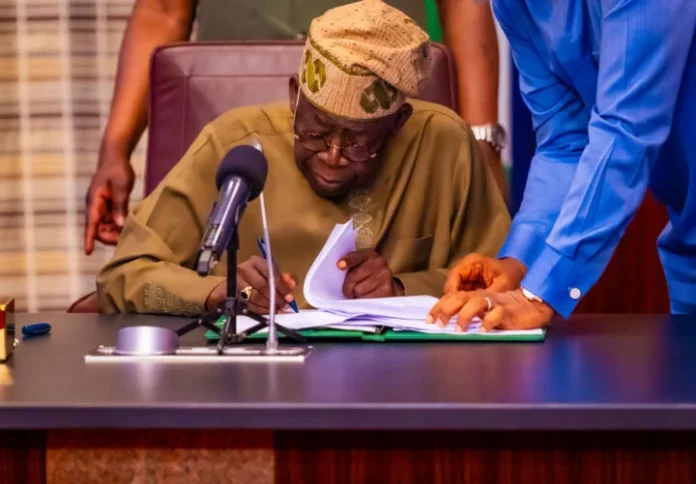President Bola Tinubu has signed four landmark tax reform bills into law, launching a major shake-up of Nigeria’s revenue architecture.
The legislation—the Nigeria Tax Bill, Tax Administration Bill, Nigeria Revenue Service (Establishment) Bill, and Joint Revenue Board Bill—aims to simplify taxation, boost revenue collection, and support economic growth.
Here’s what’s changing:
- New Central Revenue Agency: The Federal Inland Revenue Service (FIRS) is now replaced by the Nigeria Revenue Service (NRS). The NRS will collect both tax and non-tax federal, state, and local revenues .
- Harmonised Tax Administration: The Tax Administration Bill centralises and governs revenue collection across all government tiers. It also mandates stronger transparency measures like a Tax Appeal Tribunal and Tax Ombudsman.
- Consolidated Tax Statutes: The Tax Bill simplifies Nigeria’s complex tax framework into a clearer, unified legal structure—cutting down duplication and easing compliance for businesses.
- Federal–State Coordination: The Joint Revenue Board will foster collaboration between federal, state, and local tax authorities, promoting consistent policy and revenue sharing.
Why This Matters
- Improved Compliance & Growth Incentives: Consolidation and clarity encourage investments and reduce burdens on taxpayers.
- Boost for Federal Revenue: Nigeria’s historically low tax-to-GDP ratio (about 10.8%) has hampered national funding. These reforms should increase efficiency and reduce borrowing.
- Stronger Accountability: Oversight bodies like the Ombudsman and Tribunal foster taxpayer trust and ensure fair dispute resolution.
- State Autonomy Improved: Analysts say this is a major step toward fiscal federalism—states get more say over their revenue collection and management.
What to Watch
- Rollout of NRS: How quickly will it fully absorb FIRS, Customs, and other revenue agencies?
- Varying Reactions: Northern states remain wary of tax-sharing changes—will further dialogue be needed?
- Economic Impact: Will this deliver on promises to reduce deficits and support critical infrastructure funding?



